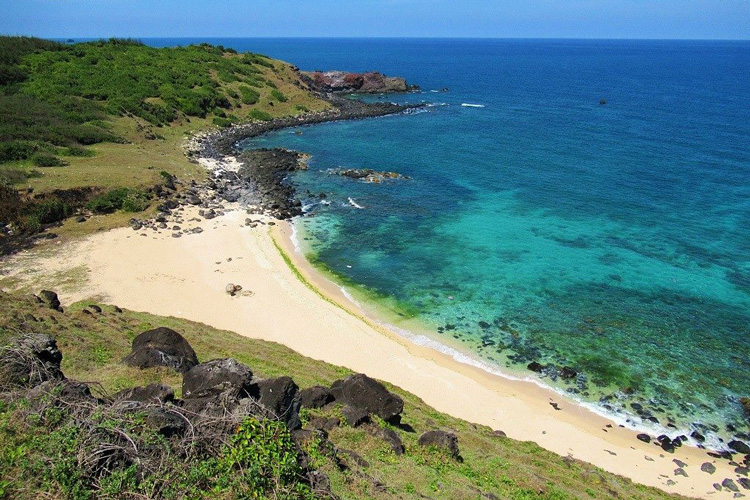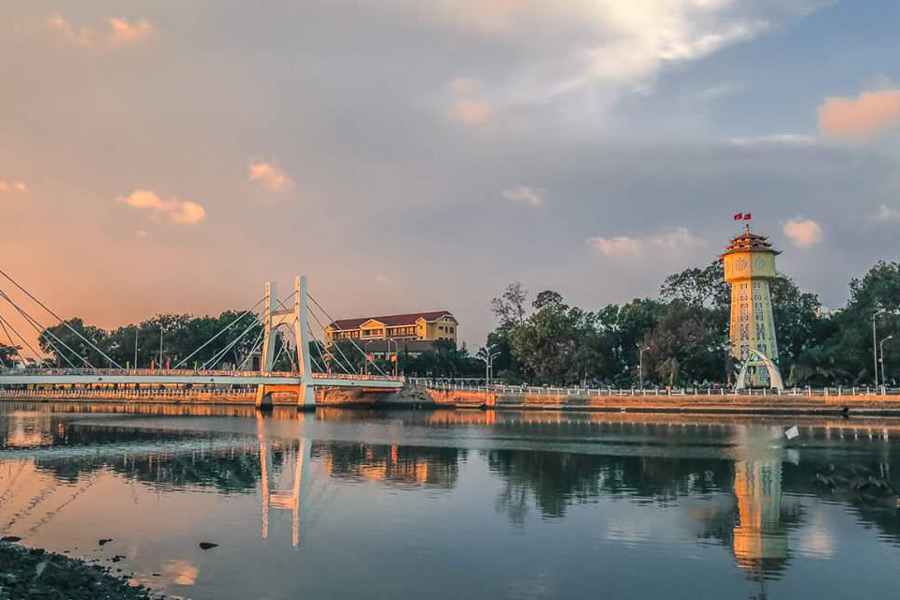Binh Thuan

Binh Thuan, a captivating province on Vietnam's southeastern coast, beckons with a diverse tapestry of landscapes and cultural richness. Nestled approximately 200 kilometers northeast of Ho Chi Minh City, its provincial capital, Phan Thiet, serves as a gateway to a region characterized by pristine beaches, expansive sand dunes, and a dynamic mix of traditional and modern influences. The province's economy thrives on agriculture, fisheries, and a burgeoning tourism sector. Notably, Binh Thuan is renowned for its production of dragon fruit, a prominent export. Tourists flock to Mui Ne, a coastal town within the province, to witness the surreal beauty of red and white sand dunes and engage in exhilarating wind- and kite-surfing activities. Steeped in history, Binh Thuan boasts the remnants of Cham culture, such as the Po Sah Inu Towers. As the province continues to develop, both in terms of infrastructure and tourism facilities, it stands as a testament to Vietnam's rich tapestry of natural wonders and cultural heritage.

Phu Quy Island
Binh Thuan's history is a tapestry woven with the threads of ancient civilizations, foreign influences, and the struggles and triumphs of the Vietnamese people. The region's archaeological sites reveal evidence of early human habitation, suggesting that Binh Thuan has been home to communities for thousands of years. However, it was during the reign of the Champa Kingdom, which dominated central and southern Vietnam from the 7th to the 19th century, that Binh Thuan truly flourished.
The Cham people, with their advanced culture and seafaring skills, left an indelible mark on the landscape. The iconic Cham towers, such as Po Sha Inu and Po Sah Inu, stand as silent sentinels, testaments to the architectural and artistic achievements of the Champa civilization.
The colonial period brought a new chapter in Binh Thuan's history, as the French established control over Vietnam in the late 19th century. Binh Thuan became a part of French Indochina, and the region saw the imprint of colonial administration. The struggles for independence from French rule and the subsequent Vietnam War left their mark on Binh Thuan, with the province's coastal location making it a strategic battleground.

The history of Binh Thuan
After the reunification of North and South Vietnam in 1975, Binh Thuan, like the rest of the country, focused on reconstruction and development. The province diversified its economy, with sectors such as agriculture, fisheries, and tourism playing crucial roles in the region's growth.
In recent decades, Binh Thuan has experienced a tourism boom, particularly in areas like Mui Ne. The province's stunning coastal landscapes, historical sites, and vibrant cultural heritage have drawn visitors from around the world. The development of tourism has brought economic prosperity to the region, as well as international recognition for its unique attractions.
Binh Thuan's history is a narrative of resilience, adaptation, and cultural richness. The province stands today as a dynamic blend of tradition and modernity, inviting travelers to explore its ancient past and experience the vibrant energy of its present. As Binh Thuan continues to evolve, its history remains a crucial foundation, shaping the identity and character of this captivating region in southeastern Vietnam.
See more: Phu Quoc Beach Holidays
The optimal time to explore the captivating landscapes of Binh Thuan province in Vietnam is during the dry season, extending from November to April. This period showcases the region at its best, with dry and warm weather creating ideal conditions for beach activities, water sports, and sightseeing. The months of November through April offer a pleasant escape for travelers, allowing them to revel in the coastal beauty of Mui Ne, explore historic Cham towers, and traverse the iconic sand dunes. The moderate temperatures and lower humidity levels make outdoor adventures more enjoyable, making this timeframe the preferred choice for those seeking a delightful and sun-soaked experience in Binh Thuan.

The weather in Binh Thuan
Getting to Binh Thuan is a seamless process with several transportation options catering to different preferences. For those arriving by air, Tan Son Nhat International Airport in Ho Chi Minh City is the primary gateway. Domestic flights to either Phan Thiet Airport or Lien Khuong Airport in Dalat offer convenient access to the province. Alternatively, the North-South Railway provides a scenic train journey to Phan Thiet Railway Station, connecting major cities like Ho Chi Minh City and Hanoi. Long-distance buses offer another practical choice, departing from major cities and providing both daytime and overnight services to Phan Thiet and Mui Ne. Travelers seeking flexibility can opt for car rentals or ride-sharing services, navigating well-maintained road networks.

There are various way to get to Binh Thuan
Tourist buses and shuttles, often organized by hotels and tour operators, streamline transportation for visitors. Adventurous souls may choose to embark on a motorbike journey from nearby cities, enjoying the freedom of the open road. Whichever mode of transportation is chosen, the journey to Binh Thuan promises glimpses of Vietnam's diverse landscapes and cultural tapestry. If you have any questions about the trip, please contact Asia King Travel will answer all your questions.
See more: Quy Nhon Beach Escape
Travel with Asia King Travel on our "Mui Ne Beach Holiday 5 days" excursion and...
Join the Mui Ne Beach Tour 3 Days to witness a stunning sunrise while riding a j...